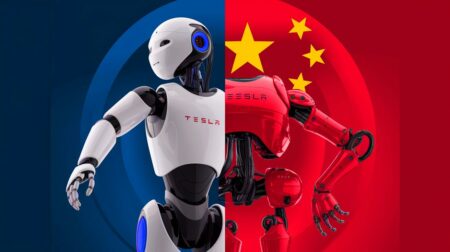| IN A NUTSHELL |
|
Quantum computing is rapidly transforming the landscape of technology, offering unprecedented computational speed and efficiency. At the forefront of this revolution is D-Wave Quantum Inc., a Palo Alto-based company pioneering the practical application of quantum annealing computers. These machines promise to solve complex problems in minutes, a feat that traditional computers could take significantly longer to achieve. From optimizing industrial workflows to accelerating drug discovery, D-Wave’s innovations are setting new benchmarks in various fields. But what exactly makes quantum computing so groundbreaking, and how is D-Wave leading the charge?
Revolutionizing Industrial Optimization
Optimization problems, particularly in industrial settings, often require significant computational resources and time. D-Wave’s quantum annealing approach has proven to be a game-changer in this regard. By utilizing quantum effects to represent problems as energy landscapes, D-Wave’s computers work by finding the lowest energy state, effectively solving the problem at hand. This method was recently deployed at Ford Otosan, a major vehicle production facility with the capacity to produce 1,500 different vehicle variants on the same line.
The challenge of managing such high variability in production led Ford Otosan to implement D-Wave’s technology. Previously, it took traditional solvers anywhere from ten minutes to an hour to optimize scheduling for a 1,000-vehicle run. However, with D-Wave’s quantum annealer, this time was slashed to just five minutes, underscoring the efficiency and potential of quantum computing in industrial applications.
Quantum Computing in Drug Discovery
In the pharmaceutical industry, the process of drug discovery is both time-consuming and costly. D-Wave’s collaboration with Japan Tobacco’s pharmaceutical division illustrates how quantum computing can accelerate this process. By enhancing large language models (LLMs) using quantum technology, D-Wave has been able to generate more ‘drug-like’ molecular structures than those typically found in training datasets. This approach not only improves the quality of potential compounds but also speeds up the discovery process.
This breakthrough was highlighted in a proof-of-concept study, which revealed that D-Wave’s annealing technology could outperform traditional methods in LLM training for drug discovery. The study demonstrated that quantum computing, when integrated with AI, has the potential to transform the pharmaceutical industry by reducing the time and resources needed to discover new drugs. As Dr. Alan Baratz, CEO of D-Wave, noted, the integration of quantum computing with AI and machine learning offers scalable and energy-efficient solutions, paving the way for enhanced AI capabilities in drug discovery.
The Unique Approach of D-Wave
Unlike other tech giants and startups in the quantum computing space, D-Wave has adopted a unique approach. By utilizing a hybrid workflow that combines quantum and classical computing, D-Wave has been able to deploy its technology to solve real-world problems more effectively. This strategy allows them to capitalize on the strengths of both quantum and classical systems, providing solutions that are not only faster but also more practical for immediate application.
The company’s focus on practical applications, such as industrial optimization and drug discovery, sets it apart from competitors. By demonstrating tangible benefits and rapidly solving complex problems, D-Wave is paving the way for broader adoption of quantum computing technologies. Their work highlights the transformative potential of quantum computing and its ability to address challenges that were previously deemed insurmountable.
The Future of Quantum Computing
As quantum computing continues to evolve, its impact on various sectors is becoming increasingly evident. D-Wave’s advancements illustrate a future where quantum technology is not just theoretical but applied, offering solutions to some of the most pressing challenges. From reducing computational time in industrial settings to revolutionizing the drug discovery process, the potential applications are vast.
However, the journey is just beginning. As more industries recognize the benefits of quantum computing, the demand for innovative solutions will grow. The question remains: how will quantum computing reshape the technological landscape in the coming years, and what new possibilities will it unlock for solving the world’s complex problems?
Did you like it? 4.6/5 (20)








Wow, this sounds like a game-changer for the automotive industry! 🚗